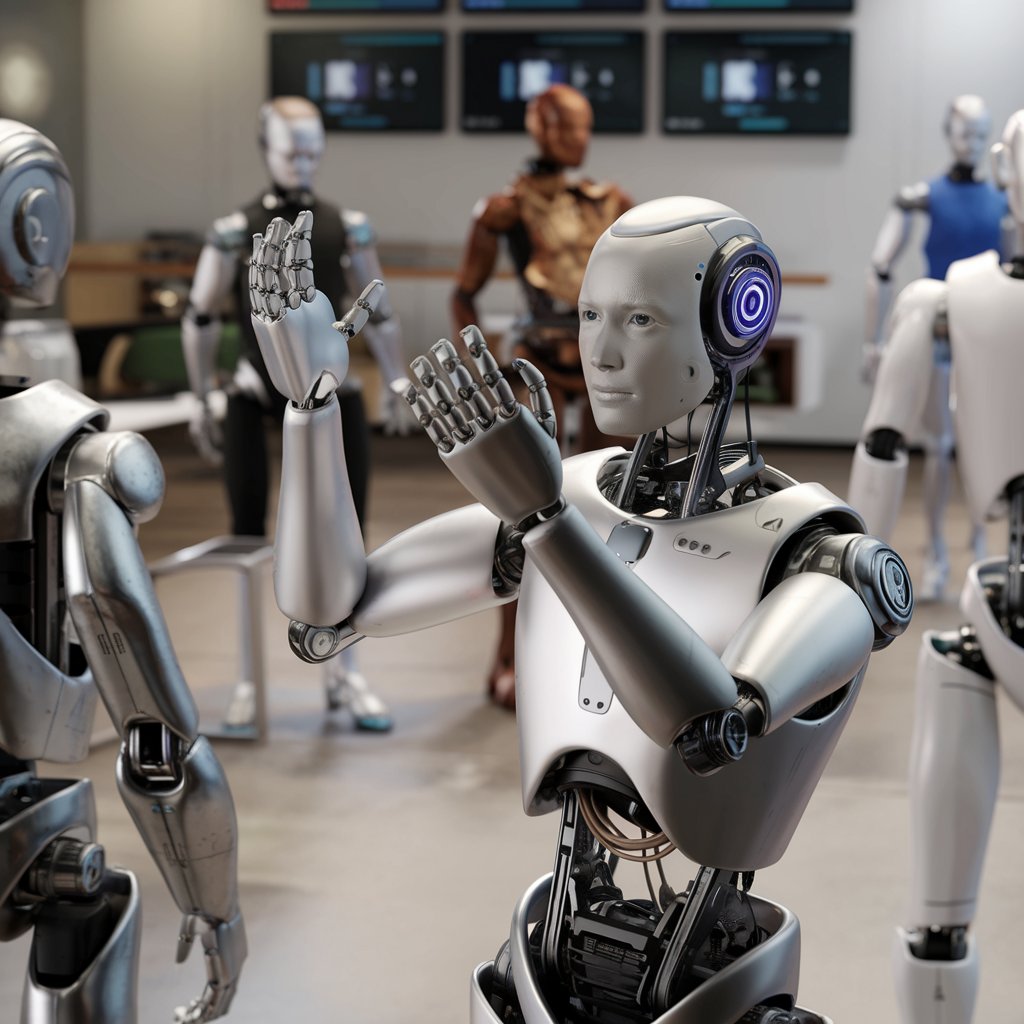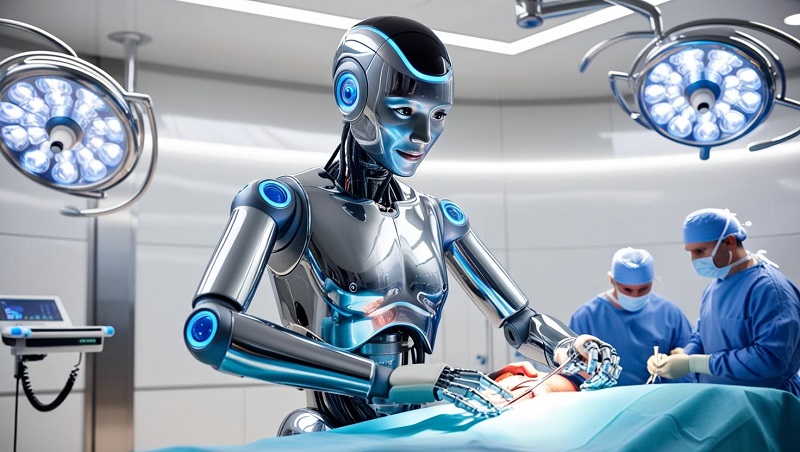The advent of autonomous humanoid robots is transforming industries by merging cutting-edge technologies like artificial intelligence (AI), machine learning (ML), and robotics. These robots, designed to replicate human movement and decision-making capabilities, are not just advancing automation—they are reshaping the way we interact with technology, carry out everyday tasks, and envision the future of human-robot collaboration.
As the demand for smarter, more adaptable machines grows, autonomous humanoid robots are at the forefront of revolutionizing sectors ranging from manufacturing and healthcare to customer service and entertainment. These robots are no longer confined to the realm of science fiction but are becoming integral components of our technological landscape.
What are Autonomous Humanoid Robots?
An autonomous humanoid robot is a machine built to resemble the human form—both physically and cognitively. While these robots can perform physical tasks, their most remarkable capabilities lie in their decision-making and learning abilities. By incorporating advanced AI and machine learning, autonomous humanoid robots can process data, analyze their environments, and make decisions without human intervention.
Unlike traditional robots, which follow predefined instructions, autonomous humanoid robots possess the ability to adapt and improve over time. They can interact with their environment and adjust their actions based on sensory inputs, past experiences, and ongoing feedback. This ability makes them extremely versatile, capable of performing a wide variety of tasks, from basic movements to complex problem-solving.
The Role of AI and Machine Learning in Autonomous Humanoid Robots
At the heart of these robots lies artificial intelligence and machine learning. AI enables robots to simulate human-like cognitive functions, while machine learning allows them to learn from experience and improve their performance over time.
- Artificial Intelligence (AI): AI in humanoid robots is responsible for processing data from sensors, cameras, and microphones. This data is used to interpret the robot’s environment and guide its actions. For example, a humanoid robot may use computer vision to detect objects in its path or natural language processing (NLP) to understand and respond to human speech. AI enables the robot to understand context, recognize patterns, and make decisions autonomously.
- Machine Learning (ML): Machine learning algorithms allow humanoid robots to learn from experience and refine their abilities without explicit programming. As the robot interacts with its surroundings, it gathers data that improves its understanding of its environment. With machine learning, robots can evolve and become more efficient in performing tasks. For instance, in a factory setting, an autonomous robot can optimize its movements and workflows based on the observations it makes during its operations.
Download PDF Brochure @
https://www.marketsandmarkets.com/pdfdownloadNew.asp?id=99567653

Key Benefits of Autonomous Humanoid Robots
1. Enhanced Efficiency and Productivity
By incorporating AI and machine learning, autonomous humanoid robots are capable of performing tasks faster and more accurately than their human counterparts. In industrial settings, these robots can streamline production lines, reduce errors, and work around the clock without the need for breaks. This leads to significant improvements in efficiency, productivity, and cost savings for businesses.
For example, in a warehouse, an autonomous humanoid robot can sort inventory, navigate shelves, and move goods autonomously, reducing the need for human labor while increasing speed and accuracy.
2. Improved Decision-Making and Problem-Solving
Autonomous humanoid robots are equipped with advanced decision-making capabilities, powered by AI and ML. These robots can assess situations in real time, process complex data, and adapt to changing conditions on the fly. Whether it’s adjusting a manufacturing process based on real-time production data or reacting to a new customer inquiry, these robots can make quick, informed decisions that would otherwise require human intervention.
In healthcare, for instance, autonomous humanoid robots can assist in surgeries, monitor patient vitals, or offer rehabilitation support. Their ability to make split-second decisions can be critical in saving lives or optimizing care.
3. Human-Robot Collaboration
While autonomous humanoid robots are highly capable, their integration with humans is perhaps one of their most exciting features. These robots are designed to work alongside humans, learning from them and adapting to their needs. In a workplace setting, humanoid robots can collaborate with humans on tasks such as data analysis, problem-solving, or repetitive labor.
In customer service, autonomous robots can handle routine inquiries, leaving more complex problems for human employees to address. This allows businesses to provide quicker responses to customers while maintaining high levels of personalized service.
4. Safety and Hazardous Environments
Autonomous humanoid robots can be deployed in hazardous environments where human workers would be at risk. In industries such as mining, nuclear energy, and space exploration, these robots can handle tasks that would otherwise be too dangerous for humans. Whether it’s working in extreme temperatures, performing repairs in hazardous conditions, or collecting data from remote locations, autonomous humanoid robots reduce the risk of injury and ensure worker safety.
5. Scalability and Flexibility
One of the unique advantages of autonomous humanoid robots is their scalability. Businesses can integrate multiple robots into their operations and scale their workforce efficiently without the constraints of hiring, training, and managing human workers. As tasks and workloads increase, autonomous robots can easily be added to enhance productivity without significant upfront investment.
Applications Across Industries
- Healthcare: Autonomous humanoid robots are already making a mark in healthcare. They are used for patient monitoring, delivering medications, assisting with physical therapy, and even providing companionship for elderly patients. Their decision-making capabilities, combined with real-time learning, enable them to provide personalized care tailored to individual patient needs.
- Manufacturing and Logistics: In manufacturing, autonomous humanoid robots handle tasks such as assembly, packaging, and quality control. These robots can adapt to different production requirements and optimize their movements over time. Similarly, in logistics, autonomous robots are used for inventory management, sorting, and transporting goods within warehouses.
- Customer Service: AI-powered humanoid robots in customer service are revolutionizing how businesses interact with customers. Robots can handle basic inquiries, troubleshoot issues, and guide customers through services. These robots can communicate in multiple languages and adapt their responses based on the customer’s behavior, providing more intuitive and personalized experiences.
- Retail and Hospitality: In retail and hospitality, autonomous humanoid robots can greet customers, provide product recommendations, and assist with check-ins and check-outs. Their ability to adapt to different customer needs enhances the customer experience and drives satisfaction.

Overcoming Challenges in Autonomous Humanoid Robots
While the potential for autonomous humanoid robots is immense, there are several challenges to address. Ethical concerns around AI decision-making, privacy issues, and the potential impact on jobs are areas that need careful consideration. Additionally, the technology is still evolving, and achieving a high level of human-robot interaction and seamless integration remains a work in progress.
The Future of Autonomous Humanoid Robots
The future of autonomous humanoid robots is filled with possibilities. As AI, machine learning, and robotics continue to evolve, these robots will become increasingly capable of performing complex tasks, learning from their interactions, and working alongside humans. Whether it’s improving operational efficiency in industries, enhancing customer experiences, or offering personalized healthcare, autonomous humanoid robots will play a critical role in shaping the future of automation.
Autonomous humanoid robots, driven by AI and machine learning, are not only advancing automation—they are redefining how machines interact with humans and perform tasks. With their enhanced decision-making capabilities, adaptability, and ability to work seamlessly alongside human teams, these robots are transforming industries and revolutionizing the way we live and work. As the technology progresses, the potential for autonomous humanoid robots will continue to expand, offering more efficient, safer, and scalable solutions across various sectors.
